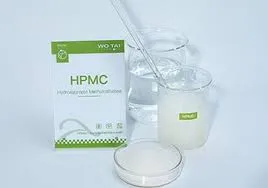
Aug . 19, 2024 03:28 Back to list
Understanding the Composition and Ingredients of HPMC in Various Applications
What is HPMC Made From?
Hydroxypropyl Methylcellulose (HPMC) is a versatile and widely used polymer in various industries, including pharmaceuticals, food, cosmetics, and construction. It is a non-ionic, water-soluble derivative of cellulose, the natural polymer found in the cell walls of plants. Understanding what HPMC is made from involves exploring the basic structure of cellulose and the chemical processes that modify it.
Origins Cellulose as a Base Material
Cellulose is a linear polysaccharide composed of glucose units linked by β-1,4-glycosidic bonds. This natural polymer is abundant in cotton, wood, and other plant materials. The process of creating HPMC starts with the extraction of cellulose from these sources. Typically, cotton or wood pulp is used due to their high cellulose content. The extracted cellulose undergoes a series of chemical modifications to form HPMC.
Chemical Modifications
1. Hydroxypropylation The first step in synthesizing HPMC is hydroxypropylation. Cellulose cellulose is treated with propylene oxide, introducing hydroxypropyl groups into the cellulose backbone. This modification increases the solubility of the cellulose in water, producing a hydrophilic polymer that can dissolve more easily and form gel-like substances.
2. Methylation The next step involves the methylation process, where the hydroxyl groups on the cellulose molecules are reacted with methyl chloride or methyl bromide. This introduces methyl groups, further enhancing the hydrophobic characteristics of HPMC and increasing its functional versatility. As a result, the degree of substitution (the ratio of substituted hydroxyl groups to total hydroxyl groups) can be tailored to meet specific requirements for different applications.
3. Purification After hydroxypropylation and methylation, the resultant HPMC is purified to remove any unreacted materials or by-products formed during the chemical reactions. This purification ensures that the final product is safe for use in food and pharmaceuticals.
Properties of HPMC
The modifications made to cellulose produce a polymer with unique properties
- Water Solubility HPMC is soluble in cold or hot water, depending on its degree of hydroxypropyl and methyl substitution. This property makes it an excellent thickening agent, stabilizer, and emulsifier in various formulations.
what is hpmc made from

- Thermal Stability HPMC can withstand a wide range of temperatures, making it suitable for processes that require heating without degrading.
- Film-Forming Ability It has excellent film-forming properties, which is why it is commonly used in coatings for tablets and pharmaceuticals.
- Biocompatibility As a derivative of natural cellulose, HPMC is generally recognized as safe (GRAS) and is biocompatible, making it suitable for applications in food and medicine
.Applications of HPMC
HPMC finds numerous applications across different sectors
- Pharmaceuticals It is widely used as a binder in tablet formulations, a thickening agent in injectable solutions, and a coating material for controlled-release medications.
- Food Industry HPMC acts as a thickener, stabilizer, and emulsifier in various food products, improving texture and consistency.
- Cosmetics In cosmetics, HPMC is used in skincare products, lotions, and gels to enhance viscosity and stability.
- Construction It serves as an additive in cement and other construction materials to improve workability and water retention.
Conclusion
HPMC is a remarkable polymer derived from the natural, renewable resource of cellulose. Through the processes of hydroxypropylation and methylation, cellulose is transformed into a versatile and functional substance with an array of applications. As industries continue to innovate, HPMC remains integral in developing safe, effective, and tailored formulations across multiple fields. Its unique properties, derived from its chemical makeup, make it a valuable material in modern technology and everyday products.
-
Versatile Hpmc Uses in Different Industries
NewsJun.19,2025
-
Redispersible Powder's Role in Enhancing Durability of Construction Products
NewsJun.19,2025
-
Hydroxyethyl Cellulose Applications Driving Green Industrial Processes
NewsJun.19,2025
-
Exploring Different Redispersible Polymer Powder
NewsJun.19,2025
-
Choosing the Right Mortar Bonding Agent
NewsJun.19,2025
-
Applications and Significance of China Hpmc in Modern Industries
NewsJun.19,2025







